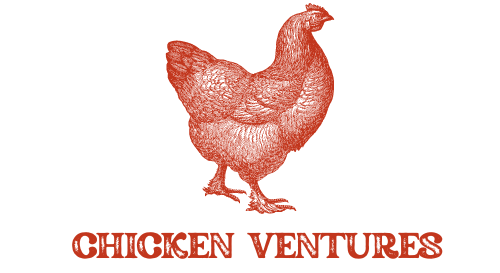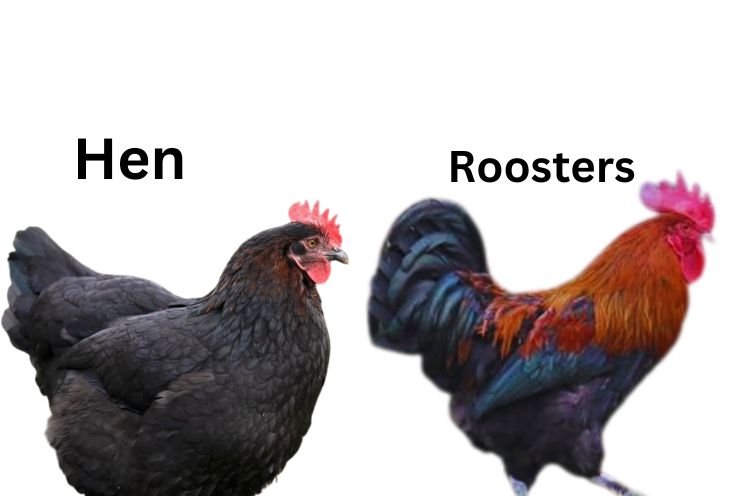Beautiful plumage and unique dark brown eggs are features of Marans chicken. Knowing the distinctions between male and female Marans will help you make wise selections whether you are thinking about including Marans to your flock or simply fascinated about these unusual birds.
In this article, we will discuss about the difference between male and female Marans with their physical traits, behavior, and maintenance.
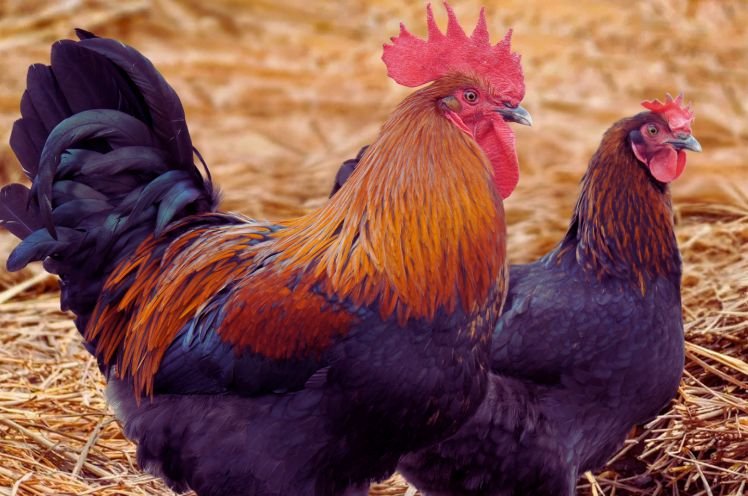
Overview
Typically for its eggs that are large and dark brown most people say their color is like chocolate. The Maran’s hens are from France. This is also mainly because of the pleasant appearance of their demeanor and attractive feather colors. All of the several types of Marans have specific color patterns namely; the Black Copper, Blue Copper and the rather unique Splash.
Physical Characteristics
This is particularly important since there are physical differences that exist between the male and female Marans. A correct identification of them will help in undertaking the right measures.
Male Marans Chicken
- Size and Build: In general, roosters (males) are stronger and larger than hens. They are more erect and carry more muscular body build.
- Feathers: The male of the Marans chicken has brighter and more shiny feathers compared to the female bird. Some of the breeds are; The Black Copper type for instance will be possessing rich copper coloration and a glossy black coat.
- Comb and Wattles: The cock has larger and proportional red comb and wattles compared with the hens. More often, their combs are clear and shinny.
- Tail: A mature male Marans chicken has a more developed tail which is longer with feathers performing a clear arch or curve.

Female Marans Chicken
- Size and Build: In general the hens which are the females are usually dwarfish and smaller in size than the roosters. Their construction is comparatively simple which is good for laying eggs.
- Feathers: Female Marans hens are usually less colorful in feathers than the male ones. The color capability is slightly not as sharp, but the colors are still quite beautiful, really.
- Comb and Wattles: Pullets have small combs and wattles as compared to those of the cocks. Generally not as high and not as perpendicular in most cases, their combs are
- Tail: This shows that a female Marans chicken is not as long or fancy as the tail of a rooster, which is present in the image above.

Behavior and Temperament
The behavior of Marans hens’ males and females completely differs at times markedly.
Male Marans Chicken
- Aggression: In the process of protecting their chickens or asserting dominance roosters do have a tendency to become aggressive. Proper handling and training decreases such feelings and encourages appropriate behavior.
- Crowding: Guys Marans are well famous for their vocalization, frequently repeated throughout the day and at night. This is a normal activity, which is used in marking territorial and fowl communication.
- Social Dynamics: Roosters prevail in the flock taking leading positions and thus providing protection for hens in most cases.
Female Marans Chicken
- Laying Eggs: Hens are famous for their capacity to lay eggs; Marans hens give big dark brown eggs. Commonly starting at six months of age, they start laying eggs.
- Social Behavior: Female Marans hens are usually not aggressive and most of them do not have the tendency to fight. Not as assertive as roosters, Cobb are generally friendly with other chicken species.
- Nesting: Hens can potentially become defensive over the spot they choose to lay eggs and will look for secure areas to do so.
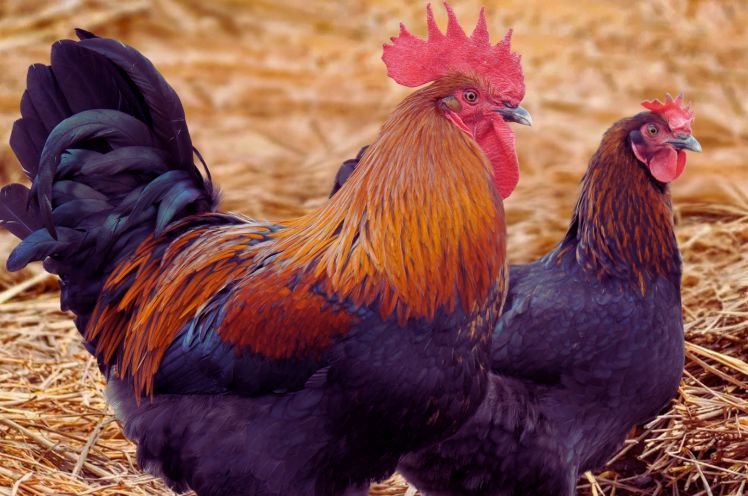
Practical Considerations
The choice of breeds that are suitable for raising include Marans hens and some of the things that one needs to consider include the following;
Housing and Space
- Roosters: Roosters, as large birds, should have enough space to roam and move around because of their size and because they crow. Their dictatorial nature also requires larger coops to accommodate them as well.
- Hens: Marans hens need to have a safe and comfortable place where they may lay eggs. There is a need to allocate enough floor space and many nesting boxes so as to reduce stress and increase frequency of laying.
Feeding and Care of Marans chicken
- Roosters: In addition to that, Marans hens for male have different nutrient demands since they are bigger and more engaged in several activities. Take care that they have all the fresh water they want and ensure that they have premium feed available.
- Hens: Like all laying birds, hens also require a diet that will assist in coming up with eggs. The feed that is given to layers should be highly special through a layer feed to maintain their health and quality of their eggs.
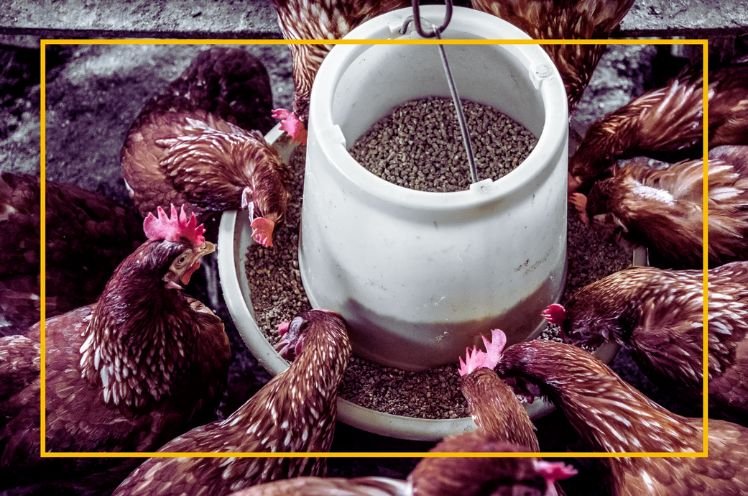
Health and Maintenance of Marans hens
- Roosters: To ensure that the roosters are checked to observe any form of aggression or any underlying ailments, then the need for medical check up cannot be overemphasized. Their feathers could also entail that they be groomed more often; the kind of feathers presented by these birds may not be very simple to manage.
- Hens: In order to keep chickens healthy, egg collection has to be done on a daily basis and particular attention has to be paid to the symptoms of reproductive issues. Saying that nobody would get diseases, it would help to prevent spreading of diseases by providing a clean environment.
| Feature | Male Marans Chickens | Female Marans Chickens |
| Feather Colors | Vibrant, iridescent | Muted, less vibrant |
| Size | Larger, more robust | Smaller, more compact |
| Tail | Long, elaborate | Shorter, less flamboyant |
| Comb and Wattles | Larger, more prominent | Smaller, less pronounced |
| Egg Production | N/A | Regular, dark brown eggs |
In conclusion of Marans Chicken
The Marans hens male or female, are a treasure to have because of their beautiful feathers and peculiar eggs. The differences in male and female Marans chickens ranging from physical appearance to actions can be helpful when raising them.
There is no doubt that hens are loyal layers of eggs and good company while roosters give that eye and the crowing. Afterward, understanding their peculiarities and needs minimizes the impacts of their behaviors and ensures the right environment for your Marans hens.
Understanding these differences will enable you to appreciate these splendid birds even more if you are raising Marans for their eggs, appearance, or, simply, as pets.
